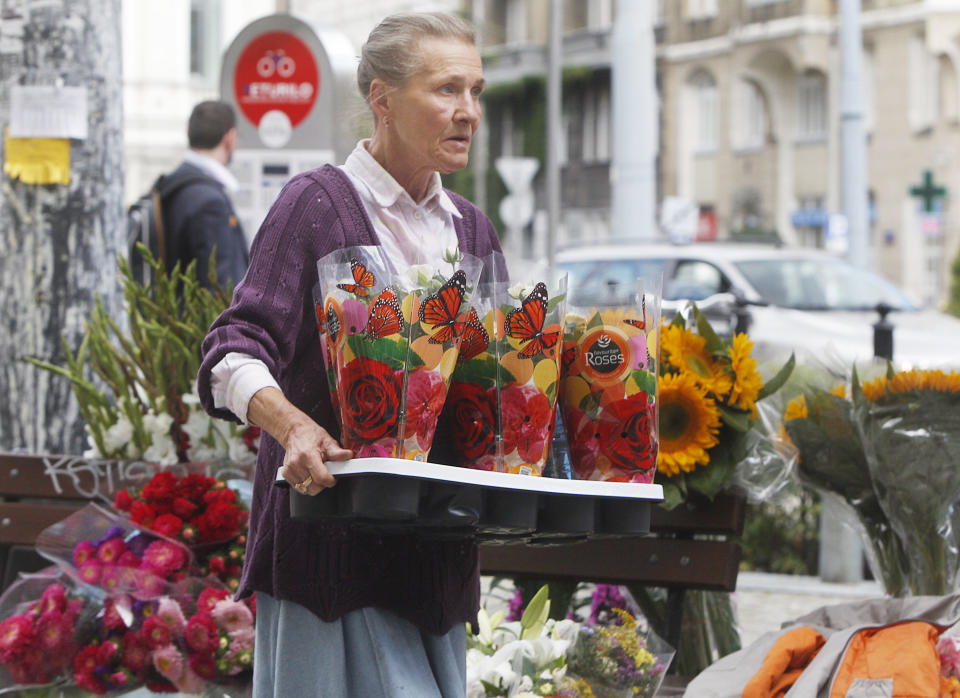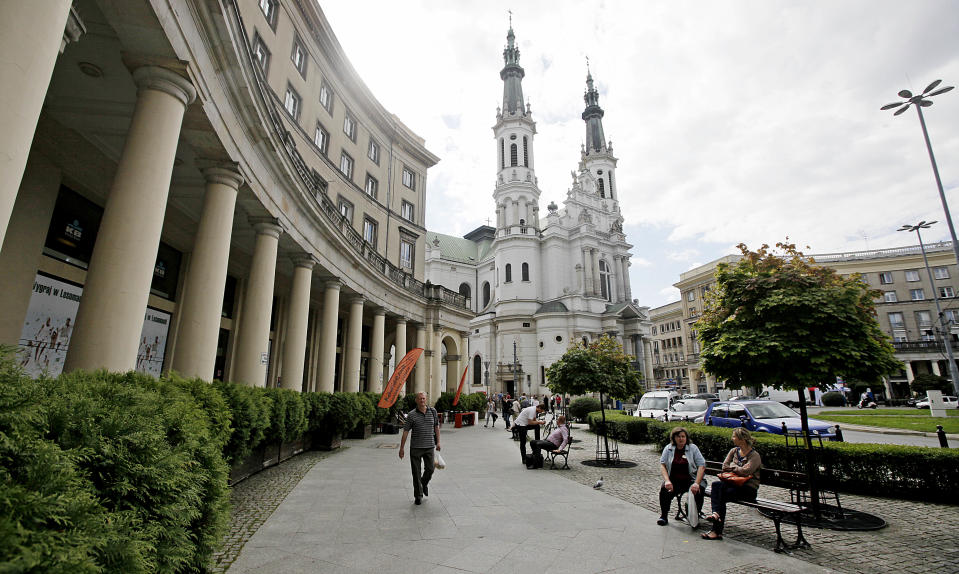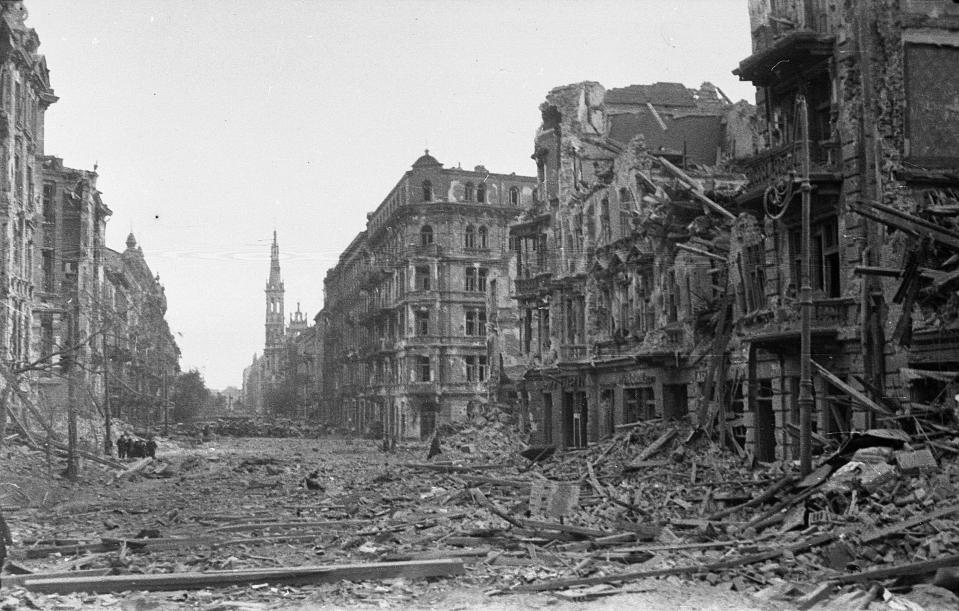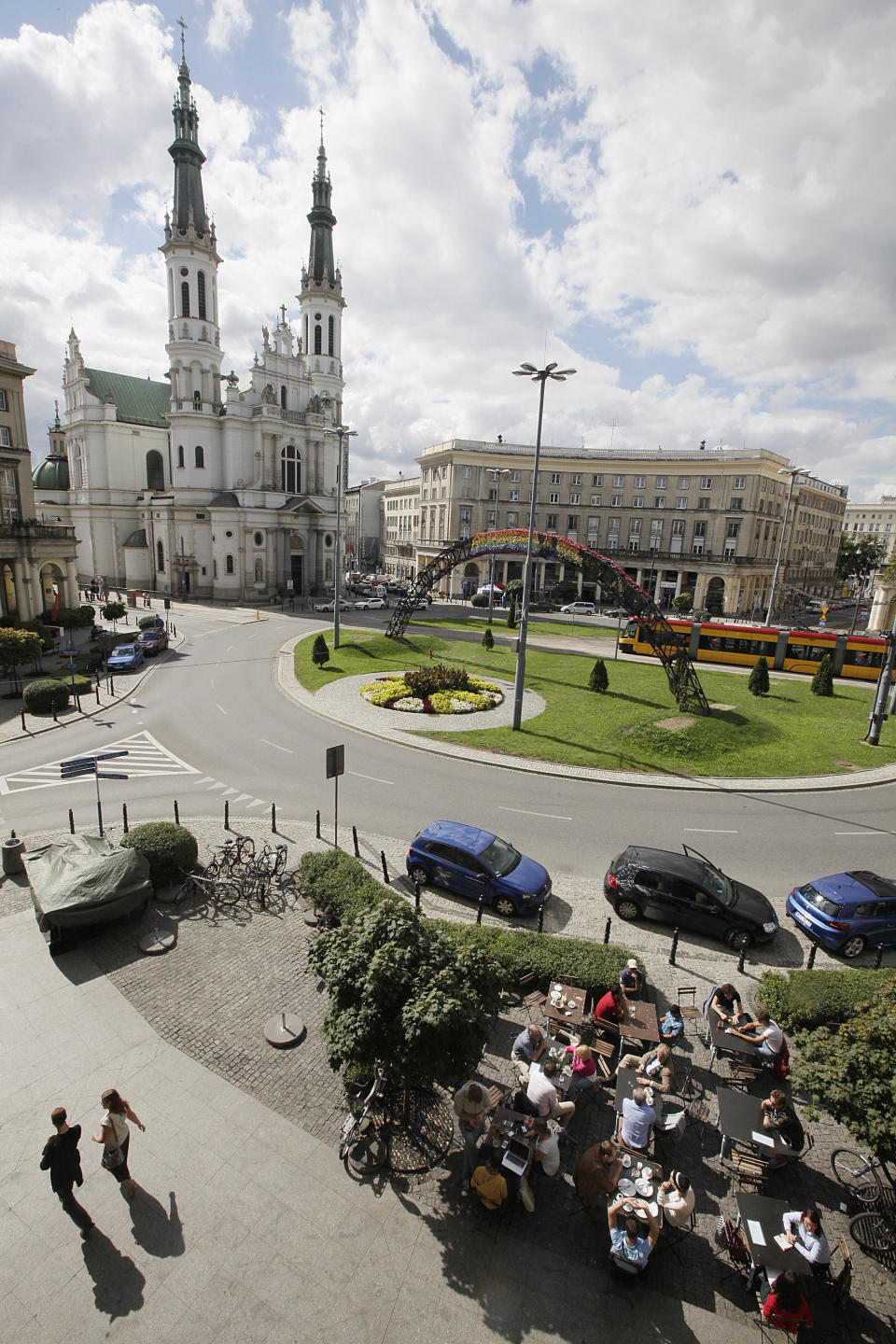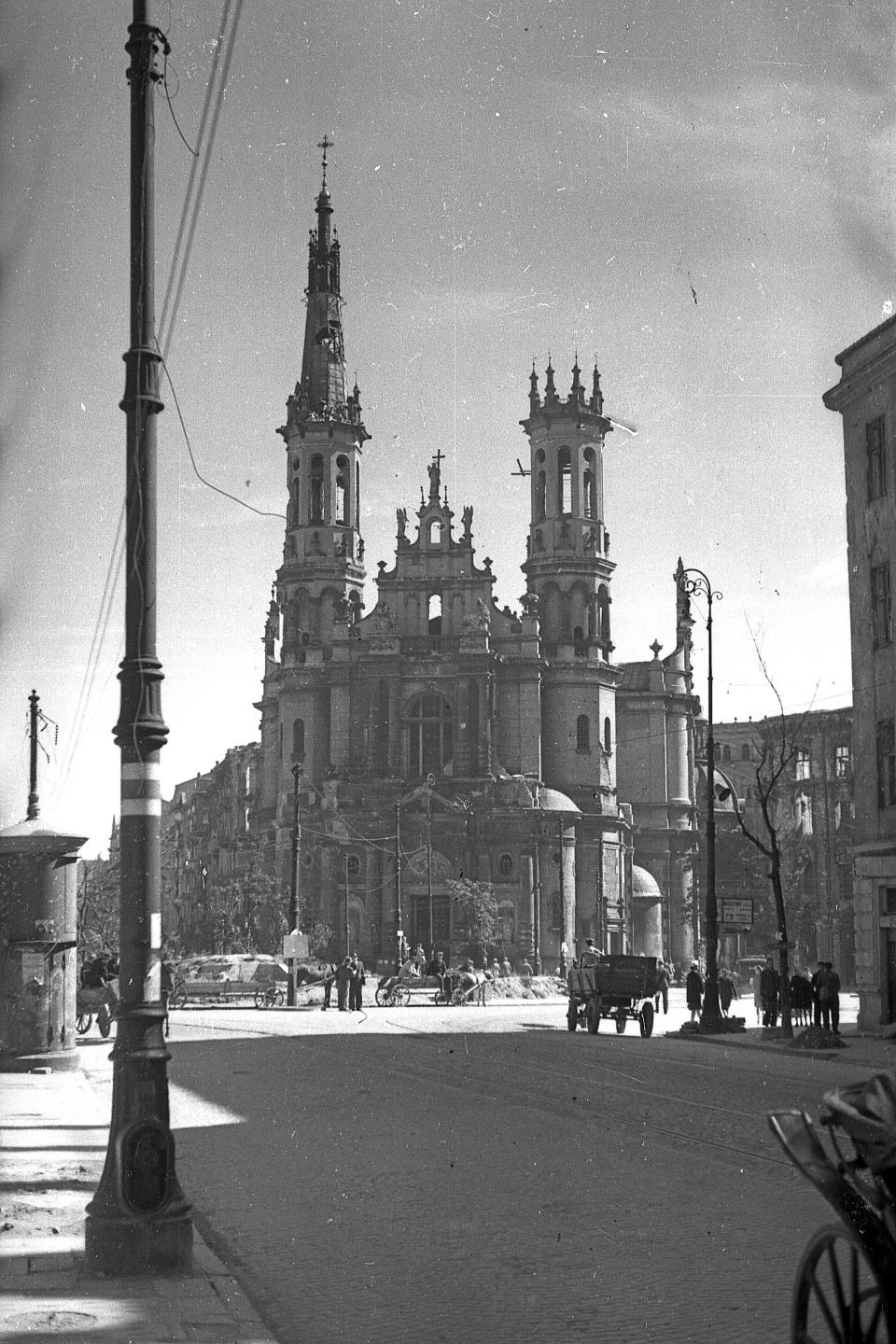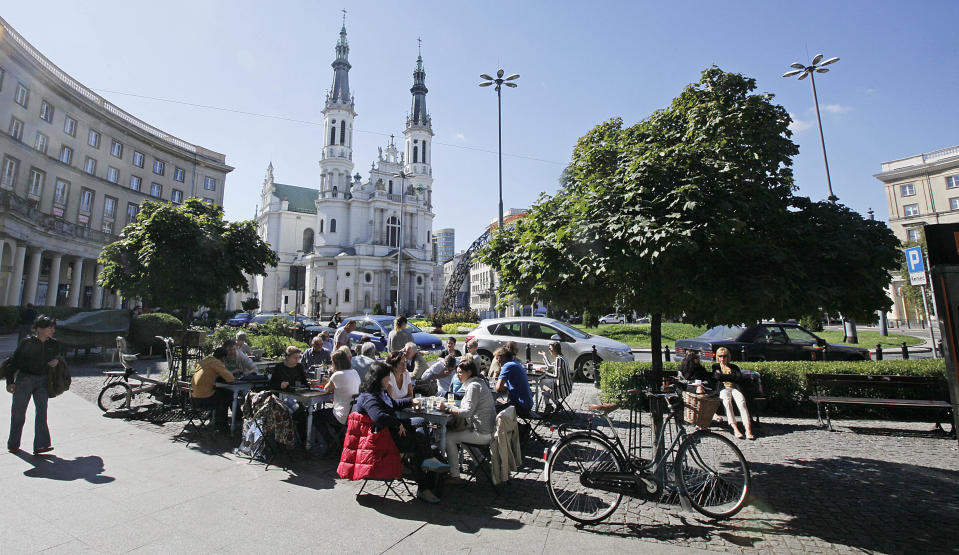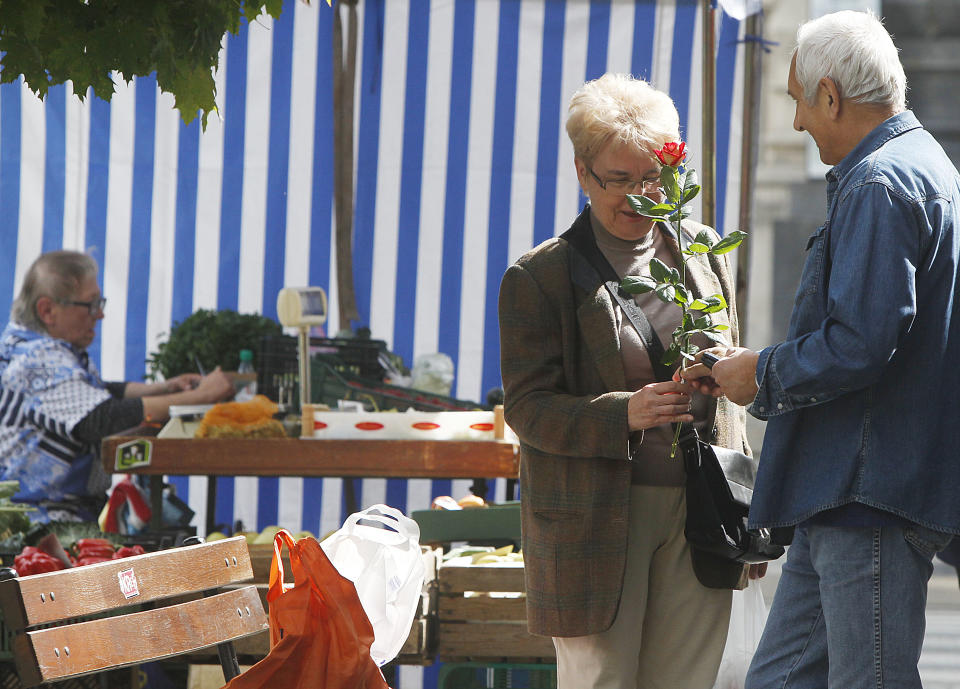Trendy Warsaw square shows Poland's change
WARSAW, Poland (AP) — It was rebuilt from ruins after World War II, but still hides a German bunker. And while this square in central Warsaw is named for a Catholic church, it's also famous for a pro-gay rainbow structure that's repeatedly been set on fire.
Plac Zbawiciela — Place of the Savior, or Savior Square — encompasses Poland's past and present in a nutshell, with all its conflicts and contradictions. Once gray and grim, the square is now a colorful place full of trendy cafes, reflecting the economic and cultural changes the country has undergone since toppling communism in 1989 and joining the European Union. Sometimes called Hipster Square, Plac Zbawiciela has become a magnet for tourists, students and professionals alike.
On a recent sunny morning, actress and model Kamila Beres was enjoying a salad and a coffee with her mother at an outdoor table at a bread and wine place called Charlotte. "I like this place very much," she said. "It's like a small enclave with very special atmosphere. It attracts nice and interesting people, artistically minded."
Her mother, Janina Beres, said she remembered the area from the time when it was "dormant," adding that she appreciates the stylish way it has been revived.
Despite its contemporary vibe, the square — built on a star design, like many squares in Paris — manages to retain its quaintness. The idea for the square originated in the 18th century as part of a road linking royal residencies under the reign of Poland's last king, Stanislaw August Poniatowski. The first buildings, a few inns, appeared a century later and were linked to the city by a horse-drawn tram in 1882.
The Church of the Holiest Savior, a Renaissance- and Baroque-style building with twin towers, was completed in 1927 after 26 years of construction delayed by World War I.
Today the square's many businesses cater to various tastes and purses. There's a florist, a sushi bar, a shot bar, an Italian cafeteria, and a gay-friendly French eatery.
"We are very happy that people engage in creating such captivating places that build the city's positive atmosphere," said Bartosz Milczarczyk, spokesman for the City Hall. "They have our full support."
But that does not include financial support: A traditional Polish restaurant on the square modestly hides in a crumbling pre-war building that awaits renovation.
Every evening, but especially on weekends, the square is filled with the sound of laughter and clinking wine glasses. Many in the crowd are students from the highly esteemed Methodist English Language College. The school, established in 1921, was closed during World War II but survived during communism thanks to its popularity and protection from some communist officials who were students there.
The school's 38-meter-high (125-foot-high) building was Warsaw's tallest when it was completed in 1910. It's now one of just three buildings in the square that predate World War II, along with the church and the building with the Polish restaurant.
During World War II, occupying Nazi Germans turned the elegant square into a district for their officers. Then in 1944, they bombed it and burned it down during fights with insurgents and in retaliation for the city's rebellion, in which some 200,000 residents were killed.
Reconstruction was done in the 1950s in the so-called socialist realism style, which is known for pompous, oversize structures, but here resulted in a well-proportioned colonnade that fit the scale of the square.
Still, the area's charm remained hidden under the era's general gloom and denial. People visited the church for Sunday Mass, or to check what the fish shop and lamp shop had to offer. In times of shortages, locals could get some supplies from illegal vendors who hid under the arcades and were often fined by the militia.
The bleakness began to dissipate when the communists were ousted in 1989 and a market economy was ushered in. The changes accelerated after Poland joined the EU, when open borders allowed young Poles to travel and bring back ideas and fashions from elsewhere. Gradually, the uninspiring shops ceded room to stylish eateries, and even the untended central green was replaced with beds of colorful flowers.
But not all the changes have been celebrated: A 2006 movie named for the square and partly filmed there showed a merciless side to Poland's new capitalism that many did not expect.
And the rainbow in the center of the square, 9 meters (30 feet) high, has repeatedly been damaged by arson. Churchgoers, who have a strong say in this predominantly Catholic nation, object to its perceived pro-gay symbolism. The city pledges to restore the rainbow — a metal structure covered in colorful fabric — with fireproof materials.
A hidden piece of the square's past came to light in 2011, when the installation of new tram tracks led to the discovery of a wartime German bunker. Though not unique, it was supposed to be taken to an army museum for preservation. But that would have cost too much, so instead it was covered with soil, and the tracks were run over it, forming yet another layer in Plac Zbawiciela's history.
